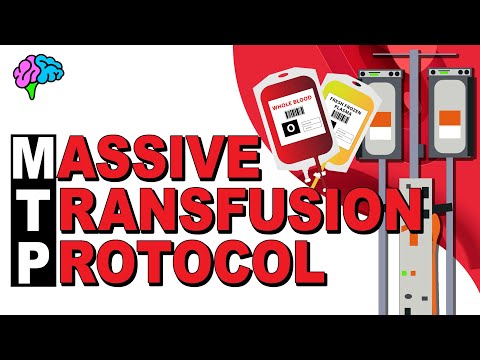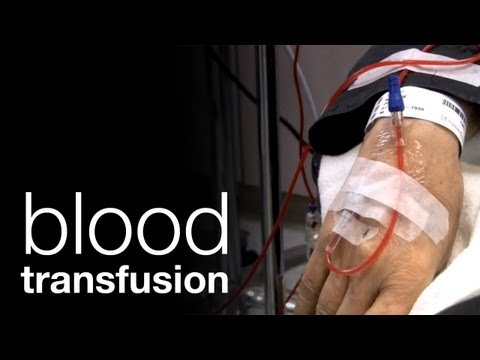When you think about blood transfusions, what comes to mind? Maybe you picture a hospital scene or a life hanging in the balance. Blood transfusions are indeed a powerful tool in medicine, playing a crucial role in saving lives. Transfusions help patients recover from trauma, manage chronic illnesses, and endure rigorous treatments like chemotherapy. Yet, behind these life-saving procedures lies a network of compassionate individuals who step up to donate their blood. So let’s dive into the world of transfusions and discover why blood donations are so vital!

Understanding the Essential Role of Blood Transfusions
Blood transfusions have long been recognized as a vital life-saving procedure in emergency medicine, surgery, and chronic illness management. They involve transferring blood components from a donor to a recipient; this can treat a plethora of medical conditions, including severe anemia, trauma, and specific cancer treatments. Blood is rich with precious components: red blood cells, platelets, plasma—the whole kit and caboodle.
Here’s the kicker: Blood comes in different types. Understanding blood type compatibility is essential for safe transfusions. For example, if you get a transfusion of the wrong blood type, it’s not just uncomfortable—it could be deadly! That’s why blood donations are so crucial; they help maintain a steady supply and a range of types. Ready for a fun fact? Did you know that type O negative is the universal donor? That fiery red blood type can be given to anyone, making it a superhero in the emergency room.
Top 7 Reasons Blood Donations Matter: The Impact of Transfusions on Healthcare

The Science Behind Blood Donation: How It Works
Okay, so how does blood donation even happen? It typically starts with volunteers who generously give blood during organized drives or at local clinics. Once collected, blood goes through a series of rigorous screenings to ensure it’s safe for recipients. That means testing for infectious diseases and ensuring blood type compatibility—pretty vital stuff!
After screening, blood gets processed into its core components: red blood cells, platelets, and plasma. Each of these components can be used to address various medical needs, kind of like those modular gym systems that let you customize your workout.

Injection Techniques: From Intramuscular to Subcutaneous
While blood transfusions are indeed a lifeline, they represent just one way that injection techniques serve medicine. Blood transfusions utilize intravenous (IV) setups to deliver blood directly into the bloodstream. But what about other methods?
Intramuscular injections often deliver materials like vaccines to your muscle tissue, allowing for a more sustained release. Think of it as gradually fueling a long-distance run: you want a steady supply over time! On the flip side, subcutaneous injections deliver medications right under the skin. This is super useful for daily medications like insulin, ensuring that patients maintain optimal health through routine care, just like sticking to a mesh workout plan for success!

Blood Type Compatibility: The Making of Effective Transfusions
Understanding blood type compatibility is key for the success of transfusions. The blood type, including the ABO classification and Rh factor, can be a matter of life and death. For example, if a type A patient receives type B blood, this could trigger a severe reaction—yikes!
A handy fact: Type O negative is the universal donor because it can be received by anyone, while type AB+ can accept any blood type. Advanced hospital databases manage this compatibility in real-time, minimizing the risks of transfusion reactions. Saving lives demands precision, and that’s exactly what this technology provides.

Future Trends in Blood Donation and Transfusion Technology
What’s on the horizon for blood donation and transfusion advancements? One innovative area is biotechnology, particularly the potential for lab-grown blood products. Imagine that! Synthesizing red blood cells could address donation shortages worldwide and minimize reliance on traditional blood supplies.
Research projects are underway exploring how to develop these products effectively. While we’re not there yet, the possibilities could dramatically change how we look at medicine and patient care. It’s an exciting time to be involved in healthcare innovation!
The Power of Community and Awareness in Blood Donation
As the demand for blood transfusions rises, boosting community awareness about blood donation is crucial. Campaigns like the “Missing Type” initiative creatively remove letters from brand names to illustrate the urgent need for all blood types. Talk about eye-catching!
Recognizing the intricate connection between blood donation and health outcomes adds weight to individuals stepping forward. Donating blood isn’t just a solitary act; it strengthens our communities and highlights our collective responsibility. With ongoing advancements and increased public engagement, blood donation will continue to be a lifeline and a source of hope.
Final Thoughts
Blood transfusions are more than just medical procedures—they are lifelines that connect communities and save lives. Whether it’s during a surgical procedure, managing chronic conditions, or supporting cancer treatment, each donation is a step toward better health for someone in need. So, next time you see a blood drive, think about it. You could be the one to save a life.
Let’s channel that energy and commitment we put into our fitness goals into something equally admirable: donating blood. After all, every drop counts in the pursuit of health, happiness, and a strong community!
Transfusion: The Lifesaving Impact of Blood Donations
The Power of Transfusion
Did you know that just one blood donation can save up to three lives? That’s right! The donation process might seem simple, but the impact is colossal. Whether it’s cancer patients undergoing treatment or those in emergencies, transfusions help them battle their conditions. However, while you may not think about it, some symptoms linked to complications like pneumothorax symptoms can actually arise from certain transfusion reactions. Understanding how transfusions work can make us appreciate these lifesaving gifts even more.
A Lifeline in Motion
Transfusions are not just about blood; they also encompass a variety of components like plasma and platelets. These elements are essential for clotting and healing. Imagine being a Hollywood star like Necar Zadegan, who donates blood so frequently that she’s truly a superhero off-screen! As the demand for compatible blood continues to rise, the need for regular donations becomes even more pressing. Much like debating whether Coke Zero vs Diet Coke is the better choice, blood type compatibility is crucial in this life-saving process.
The Call for Donors
While most healthy individuals can donate, many overlook how easy it is to plug into this movement, with centers often welcoming walk-ins. Picture this: you stroll into a donation clinic, just like shopping for that perfect black maxi skirt. It’s a quick process — and before you know it, you’ve made an impact! And if you’re hunting for tips, it’s a bit like figuring out How To get rid Of carpet Beetles; there are many resources out there to guide you. In a community that thrives on connections, your contribution can spark a chain reaction of hope and healing.
So next time you think about transfusions, remember there’s a world of stories and lives crossed through these donations. From helping patients regain strength in strenuous treatments to making small but meaningful changes in society, transfusions are more than just a medical necessity. They represent a weave of human compassion, fortitude, and connection that can uplift and inspire in ways we might not even realize.



























